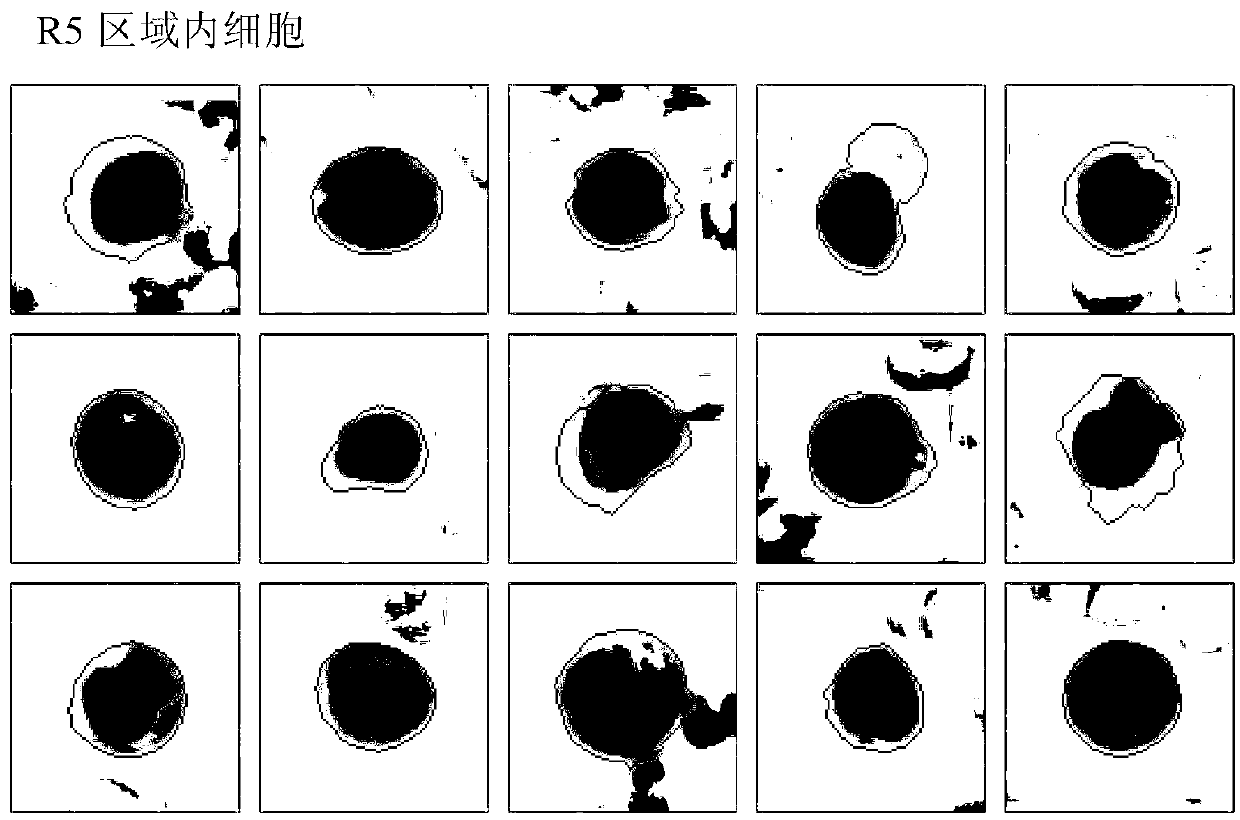Method for differential counting of white blood cells based on morphology
A technology based on morphology, classification and counting, applied in the field of image processing, can solve problems such as subjective factors, abnormal judgment or identification that cannot be diversified, and large detection workload, so as to improve the speed and accuracy of diagnosis, and achieve rapid Accurate classification and the effect of overcoming subjective factors
- Summary
- Abstract
- Description
- Claims
- Application Information
AI Technical Summary
Problems solved by technology
Method used
Image
Examples
Embodiment
[0035] (1) After the peripheral blood smear was stained by Wright's, the image was collected by microscope;
[0036] (2) Input the image into the computer system for processing, see figure 1 , to analyze the morphological parameters of white blood cells, and construct a two-dimensional scatter diagram with the cell nuclear plasma ratio as the abscissa, and construct a two-dimensional scatter diagram with the roundness of the nucleus (nuclei radius variation coefficient) as the ordinate, and construct a two-dimensional scatter diagram according to the corresponding area of the cell Microscopic image, the leukocytes are divided into four areas: lymphocyte area R1, monocyte area R2, granulocyte area R3 and extinct cell area R4;
[0037] (3) Further analyzing the morphological parameters of the regional cell lymphocyte area R1, monocyte area R2, and granulocyte area R3 divided in step (2);
[0038] see figure 2 and 3 , with the total brightness of the nucleus as the abscissa...
PUM
 Login to View More
Login to View More Abstract
Description
Claims
Application Information
 Login to View More
Login to View More - R&D
- Intellectual Property
- Life Sciences
- Materials
- Tech Scout
- Unparalleled Data Quality
- Higher Quality Content
- 60% Fewer Hallucinations
Browse by: Latest US Patents, China's latest patents, Technical Efficacy Thesaurus, Application Domain, Technology Topic, Popular Technical Reports.
© 2025 PatSnap. All rights reserved.Legal|Privacy policy|Modern Slavery Act Transparency Statement|Sitemap|About US| Contact US: help@patsnap.com



